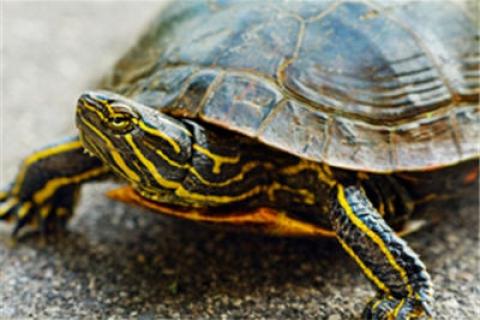
Next time you’re camping, fishing or boating, take time to check out the wonders of wildlife and nature.
When you’re on or near fresh water, keep an eye out for painted turtles. With their abundance across the country and easy-to-identify distinctive markings, you may just be lucky enough to spot one of these water turtles!
 Painted turtles -- which have 4- to 10-inch olive-colored bodies with red or yellow markings on their necks, legs and tails -- are the most widespread of turtles across the continent. They live in lakes, ponds, marshes and creeks and are found in 45 of the contiguous 48 states.
Painted turtles -- which have 4- to 10-inch olive-colored bodies with red or yellow markings on their necks, legs and tails -- are the most widespread of turtles across the continent. They live in lakes, ponds, marshes and creeks and are found in 45 of the contiguous 48 states.
Here are 10 cool facts about painted turtles to share with the kids, via fcps.edu:
- Painted turtles hatch from soft, oval-shaped eggs.
- The top part of a turtle’s shell is called the carapace.
- The small plates that make up the carapace are called scutes.
- The bottom part of a turtle’s shell is called the plastron. A painted turtle’s plastron is yellow.
- Baby painted turtles are very tiny -- often about the size of a quarter.
- When a painted turtle senses danger, it will dive into the water.
- Favorite foods of painted turtles include worms, insects, algae, fish, frogs, fruit and plants.
- Painted turtles love to bask in the sun while resting on top of rocks or logs.
- They don’t bite, but they have sharp claws that can scratch.
- The average lifespan of painted turtles in the wild is still a bit of a mystery. Many scientists guess, though, that painted turtles can live up to 40 years in the wild.
Being outside is the best time to teach your kids about the importance of respecting nature and how to practice conservation efforts. Encourage kids to ask questions and talk about why conservation is so vital to the future. Consider volunteering to clean up streams to help improve turtle and fish habitats.
Looking to get your family even more involved in conservation efforts? Consider contacting the Turtle Conservation Project.
- 5105 views

